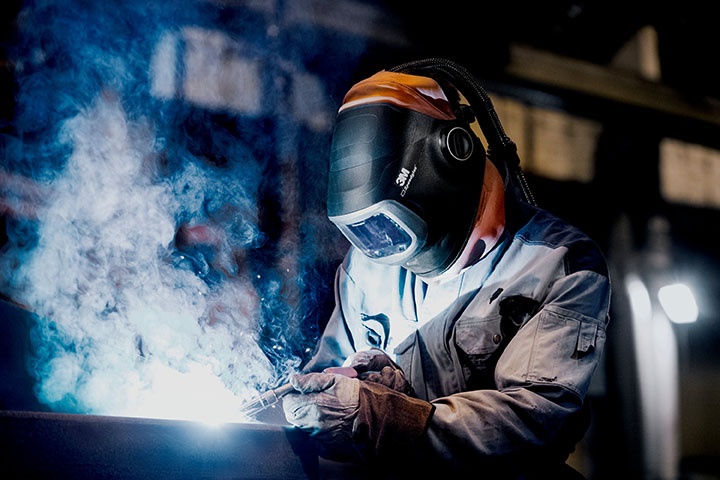Published: 02/03/2020, 13:00
HSE Begins Unannounced Welding Fume Focused Inspections

In November 2019, the Health and Safety Executive (HSE) sent out letters confirming that the Fabrication and Engineering sectors will be receiving unannounced inspections which will be taking place between January and March 2020.
The inspections will be focused on welding fume and required control measures and will look at two key areas: control measures for the release of welding fume internally – through Respiratory Protective Equipment (RPE) and local exhaust ventilation (LEV); and outside welding operations.
What This Means for You
You’ll need to put appropriate controls in place. This includes looking at how you control fumes, as all indoor welding activities will require suitable engineering controls, such as LEV and extraction.
Where these alone cannot control the exposure adequately, additional controls should be implemented, such as the use of RPE to protect the welder from residual fume.
If welding is done outside, controls will also be needed.
RPE should be provided and employees should understand why these controls are in place and how to use the equipment safely. All equipment must also be suitable for the task at hand.
There is no identified safe level of exposure, so the HSE will no longer accept any welding undertaken without suitable controls in place regarding exposure, irrespective of the duration of the task. Please also remember that all risk assessments completed for the task should reflect any new changes in the control measures.
Don’t Be Caught Out: Prepare Now!
As part of the new inspections, HSE has advised a simple five step plan of welding best practice.
1. Effectively plan your site’s welding work and consider questions like:
- What’s the duration of the welding?
- What are we welding?
- Where is the welding taking place?
Risk assessments will be needed for both. The control measures needed will be factored into your risk assessment for the welding process itself and your COSHH assessment for the fume release.
2. Make sure that you’re actively controlling welding fume through engineering controls, as mentioned above.
3. All control measures must be suitable, regardless of duration and location.
4. Make sure LEV and extraction are correctly used, maintained, and where applicable, subject to a thorough examination.
5. If using RPE, the equipment must be suitable for the user and offer the correct protection; this would be done through an RPE management programme such as face-fit testing.
The unannounced inspections follow a change to welding regulations that came into effect last year.
The change was made due to new scientific evidence from the International Agency for Research on Cancer that shows exposure to mild steel welding fume can cause lung cancer and possibly kidney cancer in humans. The Workplace Health Expert Committee has endorsed the reclassification of mild steel welding fume as a human carcinogen.
If you haven’t received your letter, contact HSE directly on 0300 003 1747 or for more information contact your local Brammer Buck & Hickman branch.